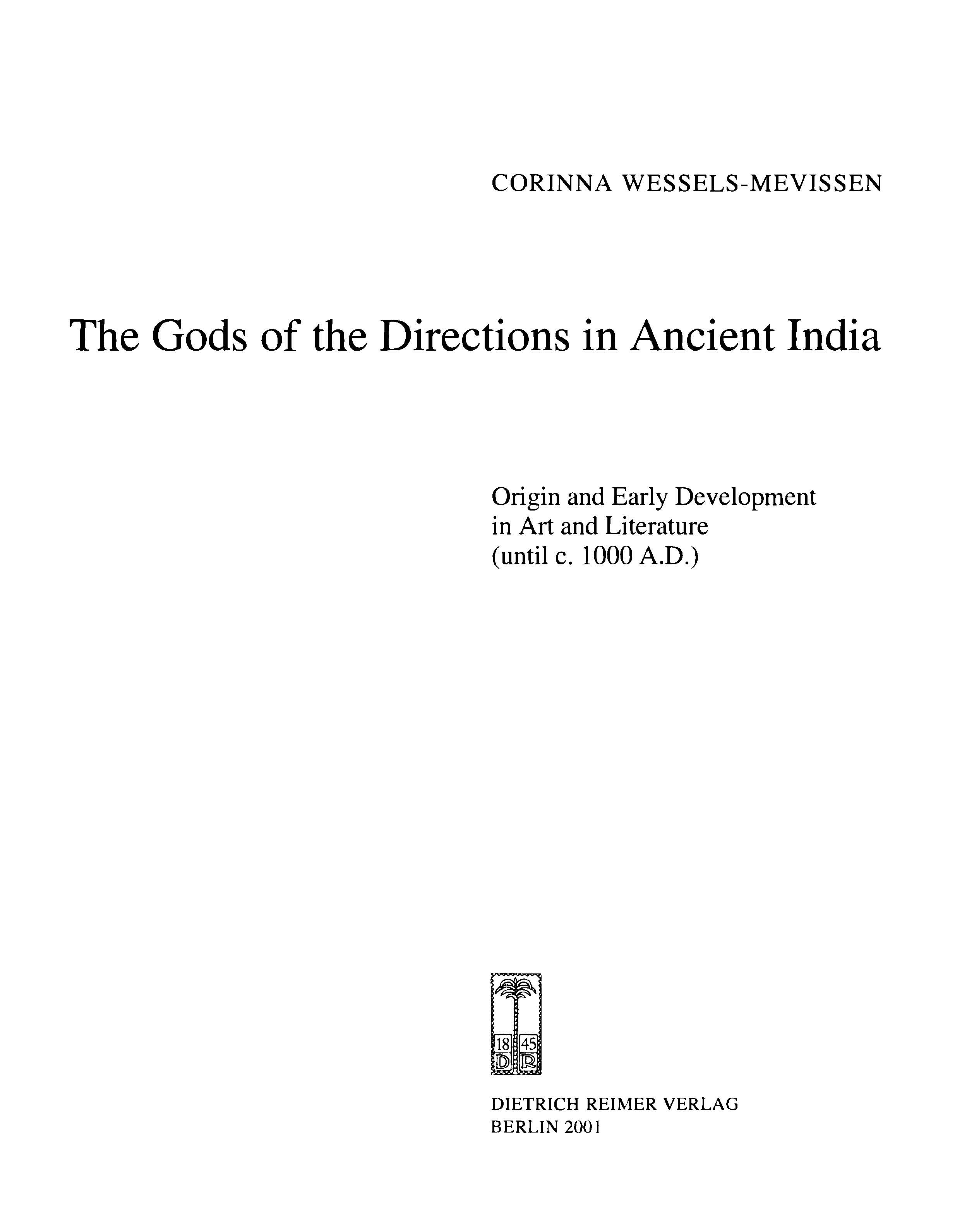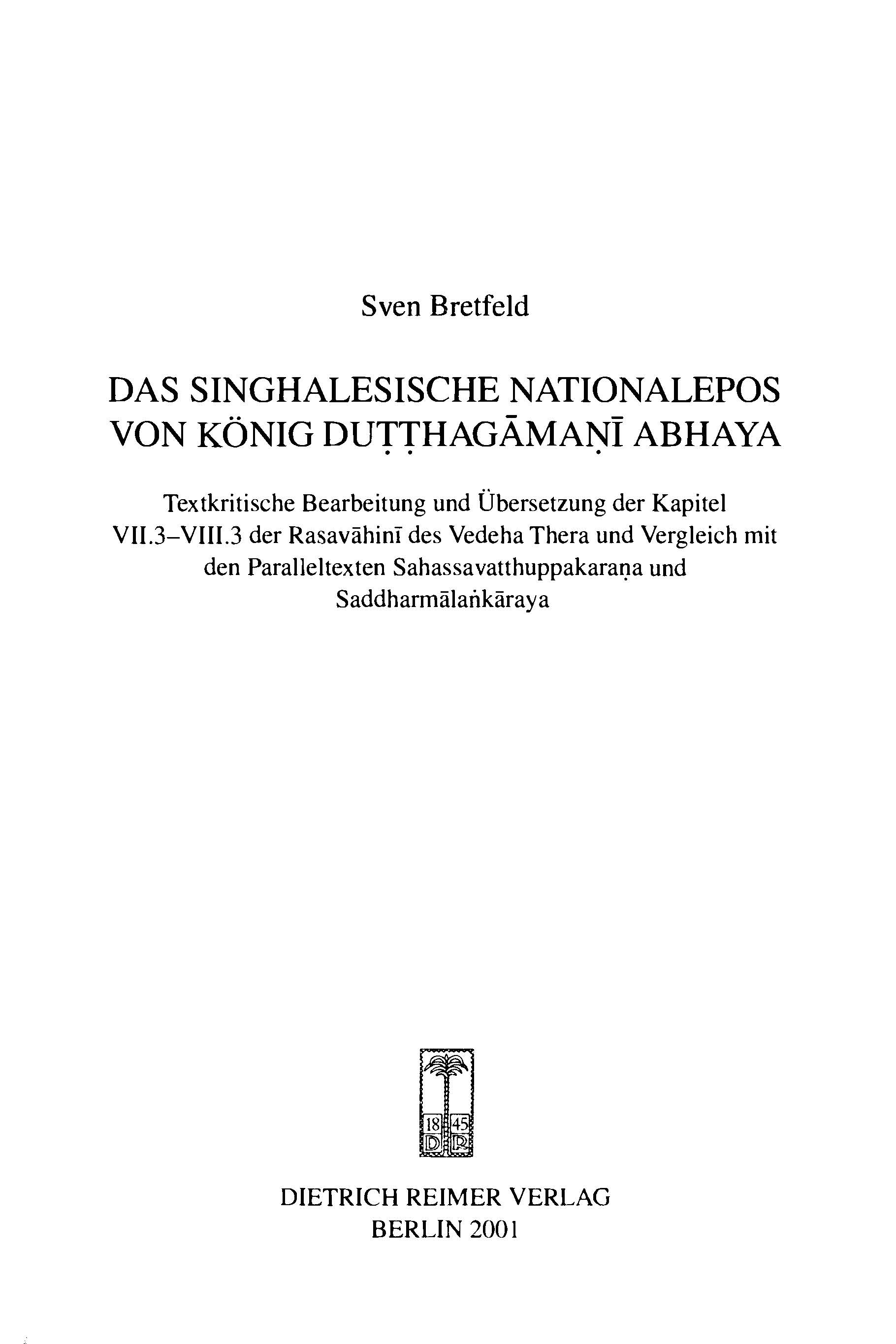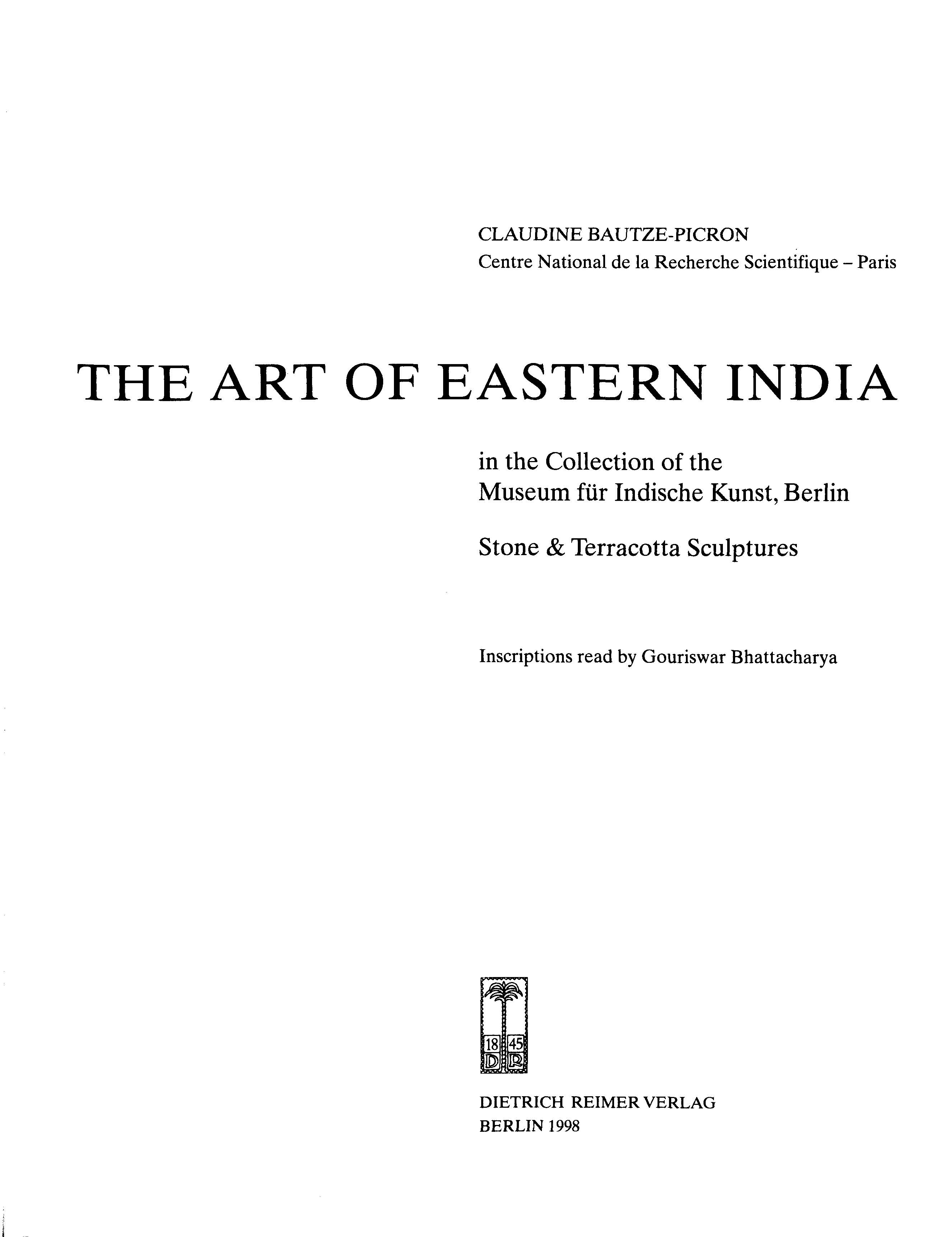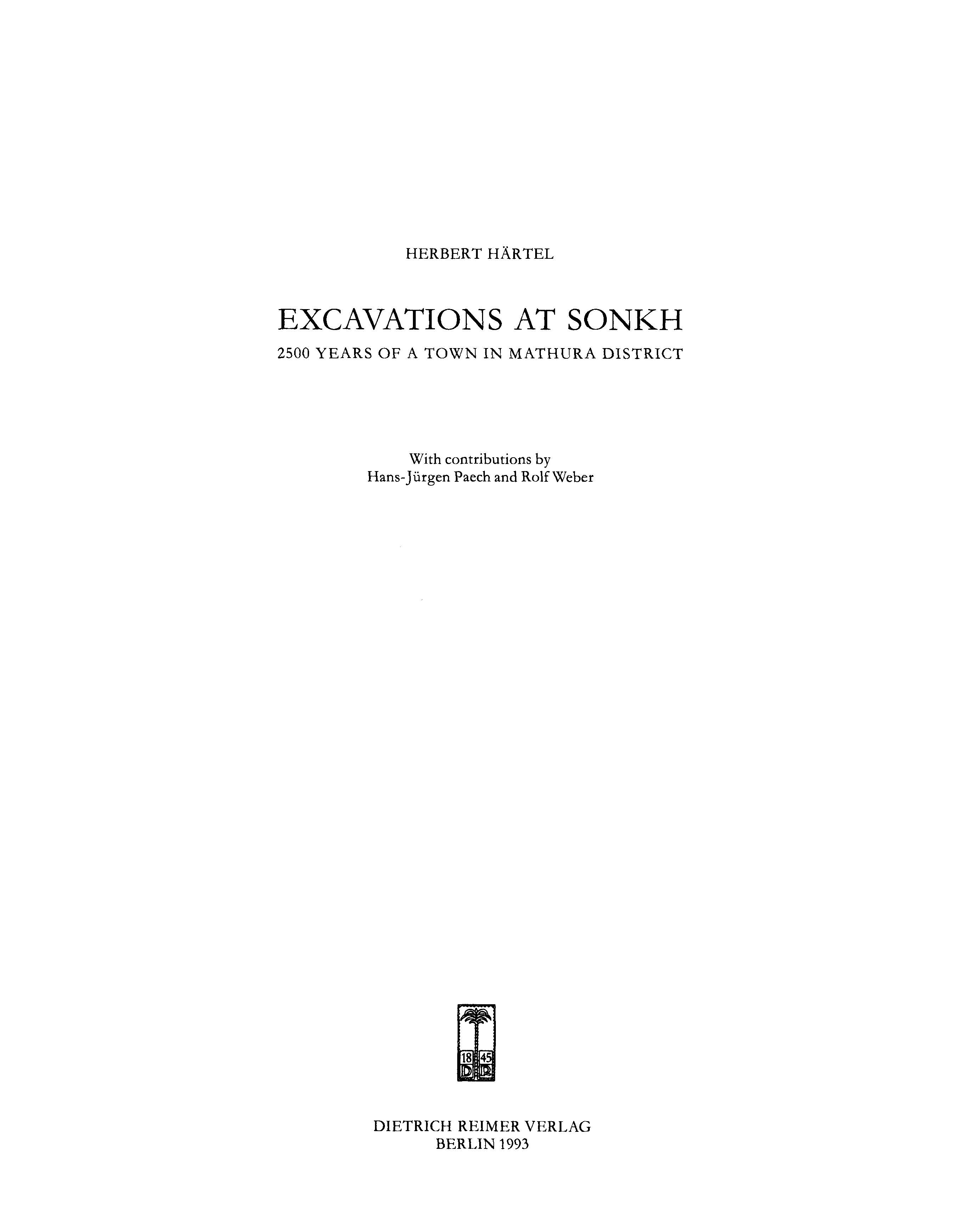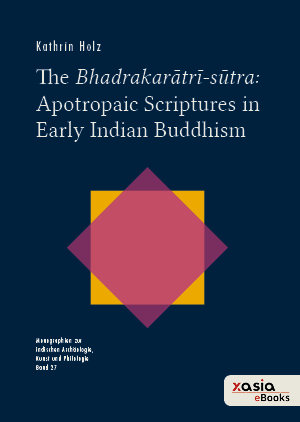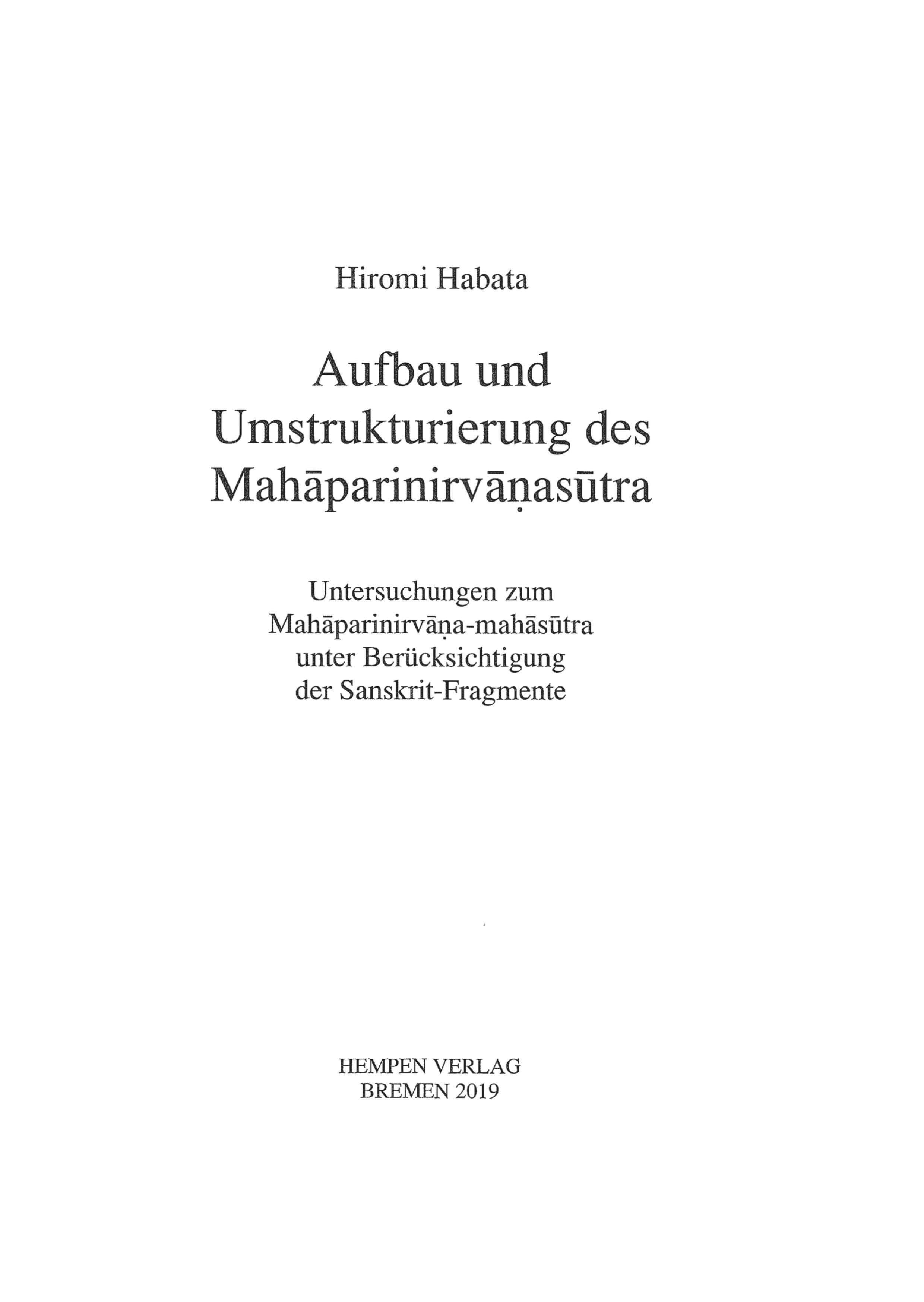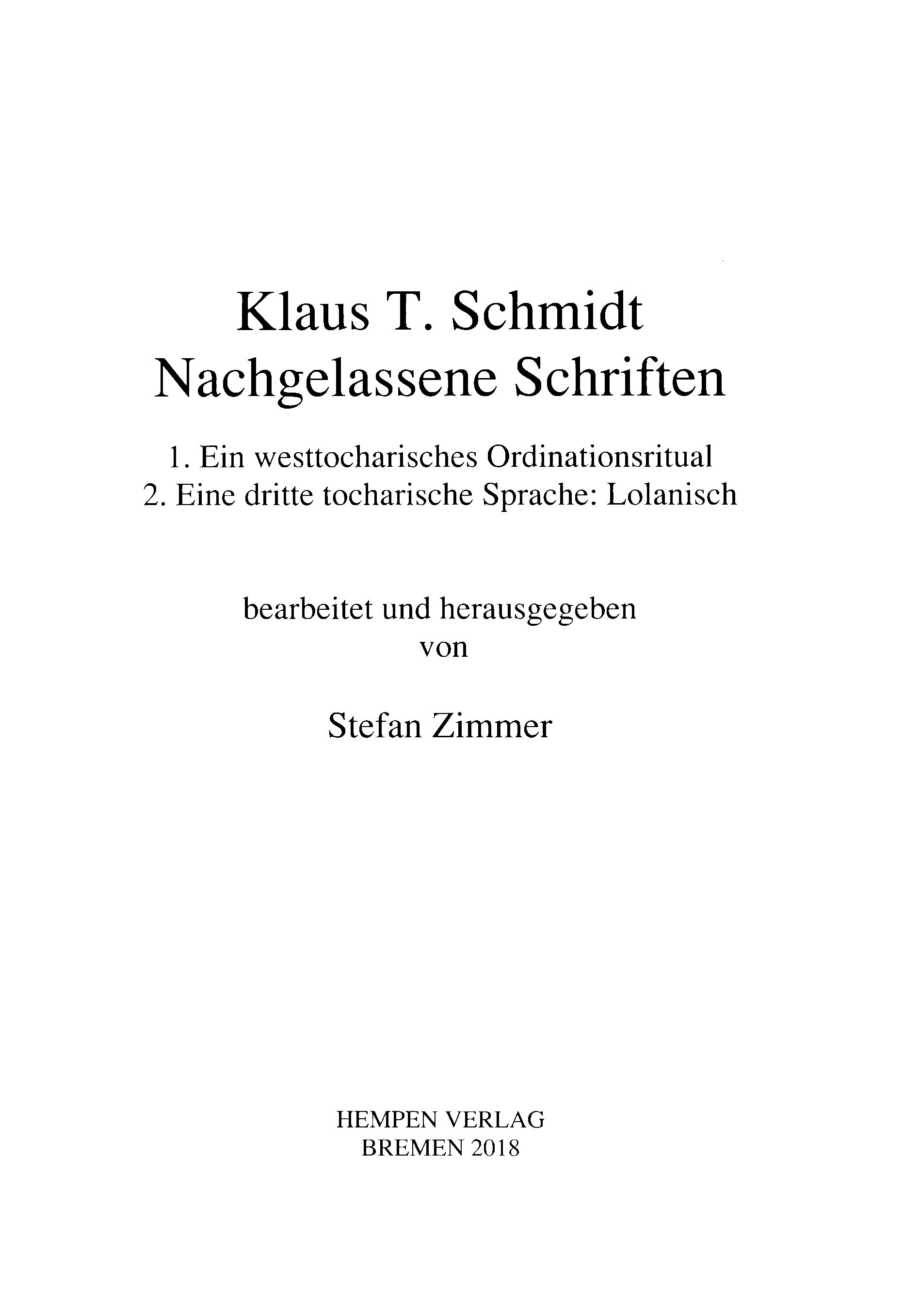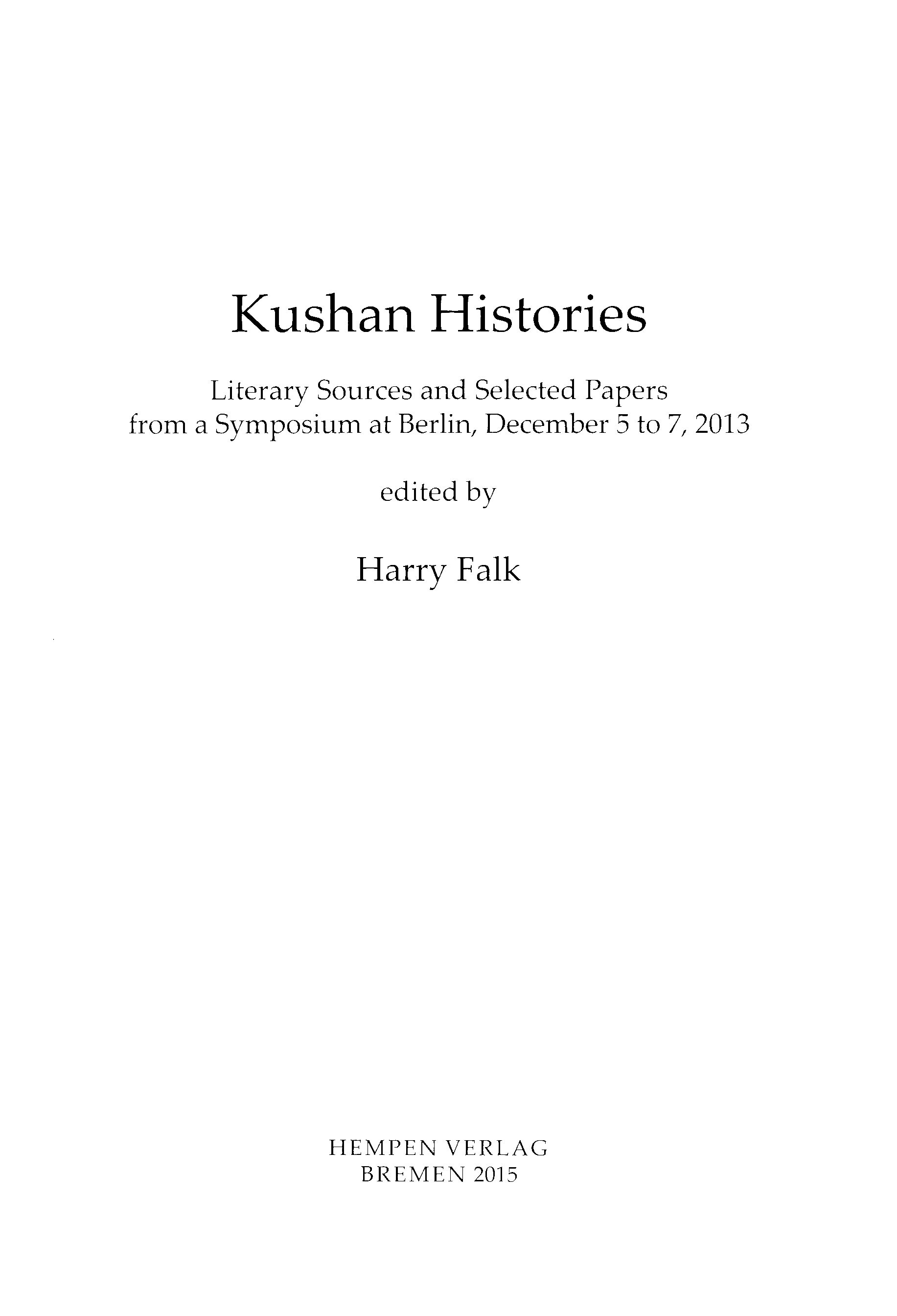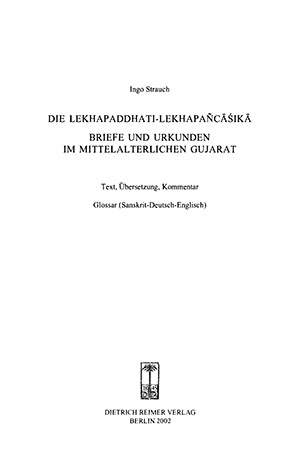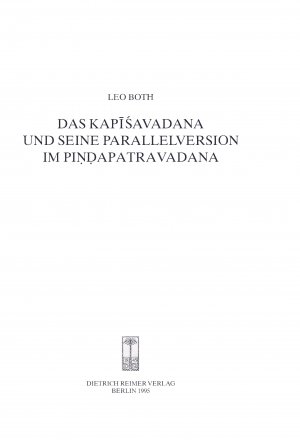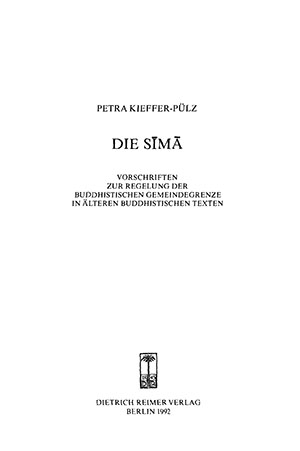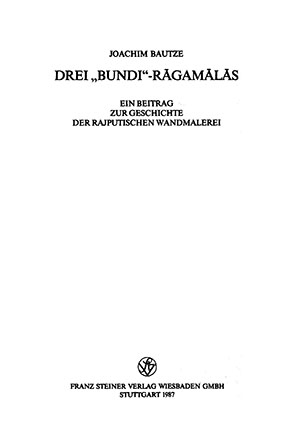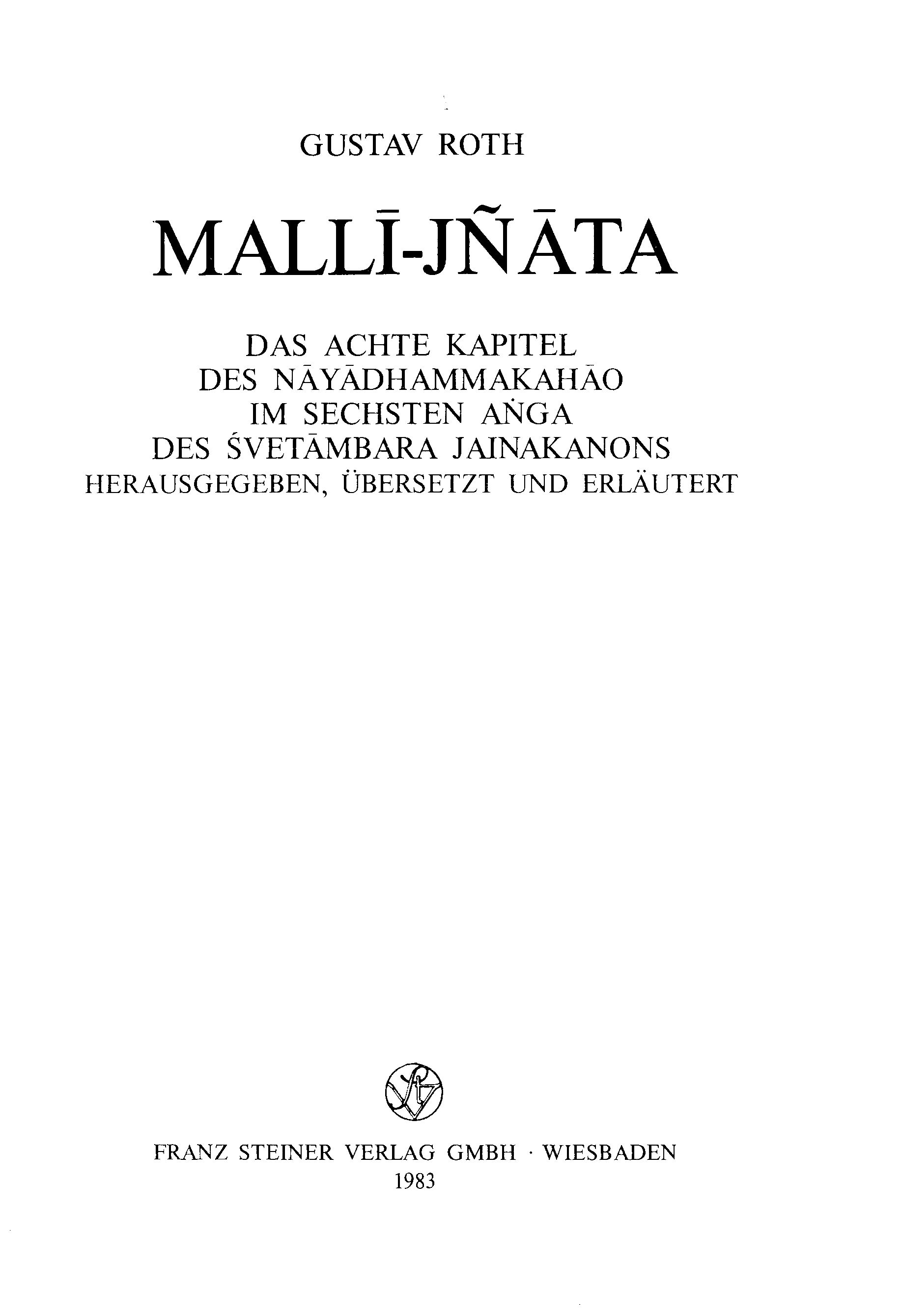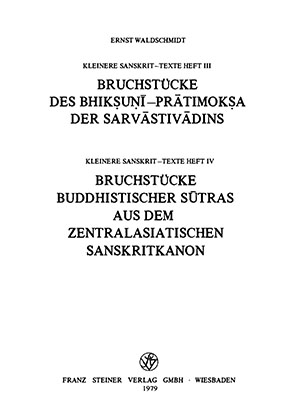Monographs on Indian Archaeology, Art and Philology
The series "Monographs on Indian Archaeology, Art and Philology" has been published since 1978 by the Board of Trustees of the Ernst Waldschmidt Foundation. It comprises outstanding contributions in the field of Indology in its entire breadth, with a special focus on the research interests of the founder (archaeology and art history of Central Asia, Buddhist literature). Inclusion in the series is decided by the Foundation's Board of Directors on the recommendation of the Foundation's Board of Trustees.
The Ernst Waldschmidt Foundation Berlin was founded in 1968 by the Indologist Ernst Waldschmidt (1897-1985). It is a foundation under civil law according to Berlin state law with its headquarters in Berlin and serves to support research on India in Germany.
Published so far
The Gods of the Directions in Ancient India: Origin and Early Development in Art and Literature (until c. 1000 A.D.)
This comprehensive study presents the origins and diverse trajectories of development of the concept of the - mostly eight - directional deities (dikpalas) in the literature and especially in the art of India in a describing and analyzing approach, with the help of an extensive illustration section. Such treatment of the material yields new insights in iconographic research on the figure art of India.
Das singhalesische Nationalepos von König Duṭṭhagāmaṇī Abhaya: Textkritische Bearbeitung und Übersetzung der Kapitel VII.3-VIII.3 der Rasavāhinī des Vedeha Thera und Vergleich mit den Paralleltexten Sahassavatthuppakaraṇa und Saddharmālaṅkāraya
An in-depth exploration of the authoritative "medieval" treatment of the material of the Sinhala national epic - in Pāli as the largest coherent collection of narratives in the Rasavāhinī of Vedeha and in Sinhala in the extended treatment of Dharmakīrti - is now presented for the first time in the present work by Sven Bretfeld. The significance of this material for South Asian studies goes far beyond the realm of pure textual analysis: at the center of this text is the conflict that has existed for more than two millennia between the Sinhalese and the Tamils who migrated from South India. It is precisely this conflict that, in a positive sense, led to the origin of historiography in the Indian cultural sphere, but in a negative sense led to today's civil war in Sri Lanka. Thus, with this text, made available here for the first time in a scholarly edition and translated for the first time, Sven Bretfeld has made a fundamental contribution both to traditional Indology and Buddhist studies and to a deeper understanding of the situation in Sri Lanka today.
The Art of Eastern India in the Collection of the Museum für indische Kunst, Berlin: Stone & Terracotta Sculptures
The catalogue presents the stone sculptures and the terracottas from Eastern India which are in the possession of the Museum für Indische Kunst, Berlin. The collection is old and was assembled at a time, in the 19th and early 20th c., when the only other large Western institutions to collect art from Eastern India were the British Museum and the Victoria & Albert Museum, and in importance, it is to be placed next to the collection of the British Museum. It illustrates specific aspects of the art of eastern India, which are not so commonly collected like votive caitya.s or votive slabs, which were found at Bodh Gayā and are usually disregarded.
Die Vorschriften für die buddhistische Nonnengemeinde im Vinaya-Piṭaka der Theravādin
The ordination tradition of the nuns of the Theravāda Buddhist school probably ended towards the end of the first millennium AD. Nevertheless, the rules of conduct for nuns, which, like those for monks, are regarded as Buddha's word, continue to be handed down in the collection of canonical texts. In the present study, the set of rules for nuns of the Theravāda tradition is presented starting from the special nuns' rules in the Book of Religious Discipline (Vinaya-Piṭaka) and the relevant commentary passages in the Samantapāsādikā, and compared with the rules of conduct for monks of the same tradition. This work is a revised version of the dissertation accepted in 1995 by the Department of Historisch-Philologische Wissenschaften at the Georg-August University in Göttingen.
Excavations at Sonkh: 2500 years of a town in Mathura district
The present report on the excavations at the mound of Sonkh, District Mathura, incorporates a detailed account of the material remains unearthed in eight seasons (1966-74) by a team of German archaeologists sent out by the Museum of Indian Art, Berlin, under the direction of the author. It replaces the more than 20 campaign and preliminary articles in journals published through the years.
Sūryās Hochzeit: Kohärenz von Text und Ritual im Ṛgveda (10.85)
The Ṛgveda is a collection of over a thousand Sanskrit hymns dating from around 1000 BCE. The style of the hymns is typically highly poetic. However, the Sūryāsūkta (Ṛgveda 10.85) included in this collection is considered a loosely structured compilation of wedding-related stanzas.
In this book, Anne Keßler-Persaud questions this fundamental assumption about the Sūryāsūkta’s degree of textuality. With the help of text-linguistic and hermeneutic methods, she proves a strong coherence of this text. The Sūryāsūkta displays a sophisticated metrical and rhetorical structure and poetically communicates an equally coherent sequence of the wedding ritual of the goddess Sūryā.
The Bhadrakarātrī-sūtra: Apotropaic Scriptures in Early Indian Buddhism
This book examines the Bhadrakarātrī-sūtra, an important representative of early Buddhist rakṣā literature, and thereby contributes to the investigation of this literary genre. This work ultimately presents an edition, partial reconstruction, and translation of the two extant Sanskrit manuscripts found in Central Asia, as well as a critical edition and translation of the Tibetan version of this text. Special focus is also given to the Chinese and Tibetan variants of the mantras. Moreover, it highlights specific rakṣā elements, formal features, and linguistic and semantic patterns of the Bhadrakarātrī-sūtra. These are crucial for the understanding of the peculiarities of its language, as well as its textual development and classification among rakṣā literature.
Aufbau und Umstrukturierung des Mahāparinirvāṇasūtra: Untersuchungen zum Mahāparinirvāṇa-mahāsūtra unter Berücksichtigung der Sanskrit-Fragmente
The story of the Buddha's death has come down to us in various texts. One version, the Mahāparinirvāṇa-mahāsūtra, is known as one of the older texts advocating the so-called "Buddha-nature theory", according to which all living beings possess the Buddha's nature. The Sūtra has had a great influence on East Asian Buddhism through the Chinese translations. However, the Sanskrit original has only survived in fragments. The study of the Sanskrit fragments sheds light on the origins of this theory in India.
Nachgelassene Schriften: 1. Ein westtocharisches Ordinationsritual, 2. Eine dritte tocharische Sprache: Lolanisch
The Indo-Germanist and Tocharologist Klaus T. Schmidt, who died in 2017, left behind two book manuscripts: his edition of the longest Western Tocharian text, an ordination ritual for Buddhist monks, and an unfinished work on the long-suspected but as yet unproven third Tocharian language, called "Lolan" by Schmidt. Zimmer carefully edited both manuscripts and supplemented the second with illustrations of the text fragments Schmidt had worked on. Schmidt's decipherment of Lolan is a milestone in Central Asian research!
Kushan Histories: Literary Sources and Selected Papers from a Symposium at Berlin, December 5 to 7, 2013
Kushan Histories discusses new research concerning the Kushan dynasty and is based on a Symposium held from December 5-7th, 2013 in Berlin.
Jaina Temple Architecture in India: The Development of a Distinct Language in Space and Ritual
Jaina Temple Architecture in India is the first comprehensive study of the development and uniqueness of Jaina sacred structures. The monograph analyses temples in the whole of India and outlines clear continuities by covering the period from the early centuries BCE till the present day. It identifies a distinct Jaina approach to the shaping of ritual space, which involves often complex spatial layouts on various superimposed vertical levels as well as conglomerates of interconnected sanctums and building elements on the horizontal plane. These accommodate a multitude of venerated objects and mirror specific Jaina patterns of worship as well as Jaina mythological and cosmological concepts.
Die Lekhapaddhati-Lekhapañcāśikā: Briefe und Urkunden im mittelalterlichen Gujarat
Text, translation and commentary of the Lekhapaddhati-Lekhapañcāśikā, an anonymous text from medieval Gujarat written in Jaina or Gujarātī Sanskrit, containing samples of charters and letters.
Das Kapīśāvadāna und seine Parallelversion im Piṇḍapātrāvadāna
The present work is a revised version of the dissertation accepted by the Faculty of Philosophy of the University of Bonn in 1992. It contains the edition and translation of the Kapīśāvadāna and its parallel version in the Piṇḍapātrāvadāna as well as an introduction with three main points:
1. the assignment of the various Hss of the two Avadānas to the corresponding versions and, as far as possible, an account of the relationship of the various versions to each other,
2. the Buddhist narrative motifs used by the author, and
3. the hybrid Sanskrit forms.
Die Sīmā: Vorschriften zur Regelung der buddhistischen Gemeindegrenze in älteren buddhistischen Texten
The present study is the extended version of my dissertation accepted by the Department of Historical-Philological Sciences in Göttingen in 1989. It is composed of three parts, each self-contained and with a separate introduction. The first part of this work (A) is devoted to the term sīmā in the Vinaya of the Theravādin. The first section (I) examines the rules governing the sīmā in the second chapter of the Mahāvagga, while the second section (II) deals with the application of the sīmā term in all other parts of the Vinaya. Part A thus aims to give an overview of which Sīmā rules were already in force in this early period and how they were applied. The second part (B) then deals with the commentary on the Sīmā rules in the Vinaya, i.e. on the text dealt with in A I, from Buddhaghosa's Samantapāsādikā. The three major Vinayaṭīkās - Vajirabuddhiṭīkā, Sāratthadīpānī and Vimativinodanīṭīkā - are also consulted for a number of passages. In Part C, the Sanskrit manuscript of the Vinayavastvāgama from Gilgit and the Tibetan translation preserved in the Kanjur are used to examine the Sīmā rules of the Mūlasarvāstivādin preserved in the chapter on Buddhist confession and compare them with the Theravādin rules.
Drei "Bundi"-Rāgamālās: Ein Beitrag zur Geschichte der rajputischen Wandmalerei
With this volume, we would like to contribute to the history of Rajput mural painting by presenting, iconographically identifying and dating three sequences of 36 previously unpublished murals each. Two of the sequences are located in a part of the palace of Bundi, the capital of the former princely state and present district of the same name in the state of Rajasthan, which is usually inaccessible to the public and which has produced a school of painting that is mentioned side by side with the famous school of painting of Kangra in the Pahari region. Sometimes this style of painting is even considered one of the most beautiful styles of Indian miniature painting.
Mallī-Jñāta: Das achte Kapitel des Nāyādhammakahāo im sechsten Aṅga des Śvetāmbara Jainakanons, herausgegeben, übersetzt und erläutert.
The eighth chapter of the Nāyādhammakahāo in the sixth Aṅga of the Śvetāmbara Jaina Canon, edited, translated and explained by Gustav Roth.
Bruchstücke des Bhikṣuṇī-Prātimokṣa der Sarvastivādins; Bruchstücke buddhistischer Sūtras aus dem zentralasiatischen Sanskritkanon
Facsimile reproduction of the works "Fragments of the Bhikṣuṇī-Prātimokṣa of the Sarvastivādins" and "Fragments of Buddhist Sūtras from the Central Asian Sanskrit Canon", originally published in 1926 and 1932 by the Deutsche Morgenländische Gesellschaft in Kommission bei F. A. Brockhaus, compiled in one volume.



